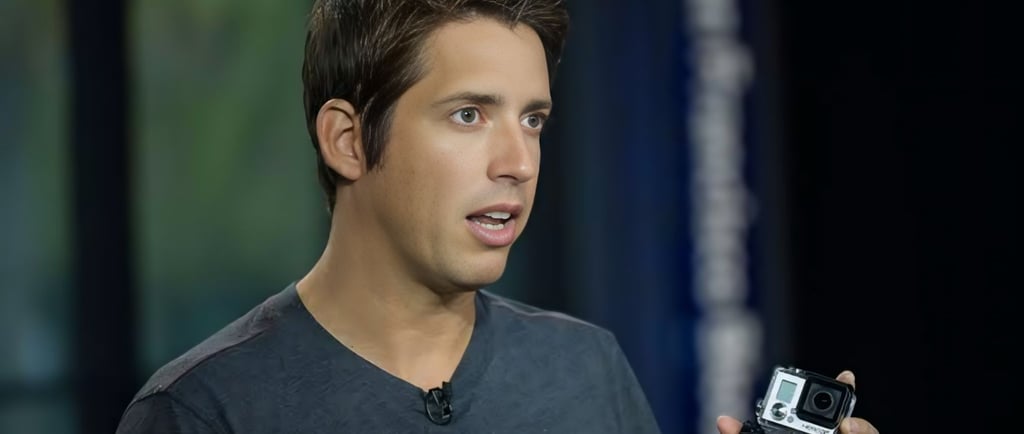The Small Idea That Made Him a Billionaire
Nick Woodman transformed a surfer’s frustration into GoPro, a billion-dollar empire. His journey from selling cameras out of his car to revolutionizing action photography proves that relentless passion and innovation can turn simple ideas into global phenomena.
AI
Thrive Vision
5/5/20252 min read


From Surfing Frustration to Eureka Moment
In 2002, Nick Woodman, a 26-year-old surfer and failed entrepreneur, faced a problem familiar to adventure enthusiasts: capturing high-quality footage of his surfing exploits. Existing cameras were bulky, expensive, and ill-suited for extreme conditions. During a surfing trip to Australia, Woodman crafted a makeshift wrist strap using a rubber band and a disposable camera. This rudimentary prototype became the foundation of GoPro.
Woodman’s vision was simple: create an affordable, durable camera that could withstand waves, snow, and dirt. He borrowed $30,000 from his parents, lived out of a van, and sold shell necklaces and bead belts at California beaches to fund his dream. “I was determined to make it work, even if it meant living like a nomad,” he later recalled.
The Birth of GoPro: A Rocky Start
In 2004, Woodman launched the first GoPro Hero, a 35mm film camera retailing at $20. While surfers embraced its waterproof casing and wrist strap, critics dismissed it as a “niche gadget.” Undeterred, Woodman focused on grassroots marketing. He handed out free cameras to athletes, sponsored surf competitions, and leveraged user-generated content to build hype.
The 2010 release of the HD Hero marked a turning point. With 1080p video, a wide-angle lens, and a 299pricetag,itappealedtoskydivers,mountainbikers,andevenHollywoodfilmmakers.GoPro’sYouTubechannel,featuringjaw−droppingstuntsfilmedbyusers,wentviral.By2011,revenueskyrocketedto299pricetag,itappealedtoskydivers,mountainbikers,andevenHollywoodfilmmakers.GoPro’sYouTubechannel,featuringjaw−droppingstuntsfilmedbyusers,wentviral.By2011,revenueskyrocketedto234 million.
IPO, Setbacks, and Reinvention
GoPro’s 2014 IPO valued the company at $3 billion, making Woodman a billionaire overnight. However, the euphoria was short-lived. Competition from smartphones and cheaper action cameras led to declining sales. In 2016, layoffs and product recalls (like the ill-fated Karma drone) tarnished the brand.
Woodman pivoted by diversifying GoPro’s offerings. The HERO7 Black (2018) introduced HyperSmooth stabilization, a game-changer for content creators. Subscription services like GoPro Cloud and Quik editing software expanded revenue streams. Today, GoPro remains a staple for adventurers, with 80% of its revenue coming from cameras priced under $400.
Legacy: Redefining Storytelling
Woodman’s genius lay in recognizing that people don’t just buy cameras—they buy the ability to tell their stories. GoPro empowered everyday users to become filmmakers, fueling the rise of influencer culture. “We didn’t invent action cameras,” Woodman said. “We invented a new way to share experiences.”
Key Takeaway: Innovation thrives when passion meets persistence. Woodman’s journey teaches us that solving a personal problem can spark a global movement.
Inspiration
Explore success stories and motivational journeys today.
Growth
Vision
© 2025. All rights reserved.
